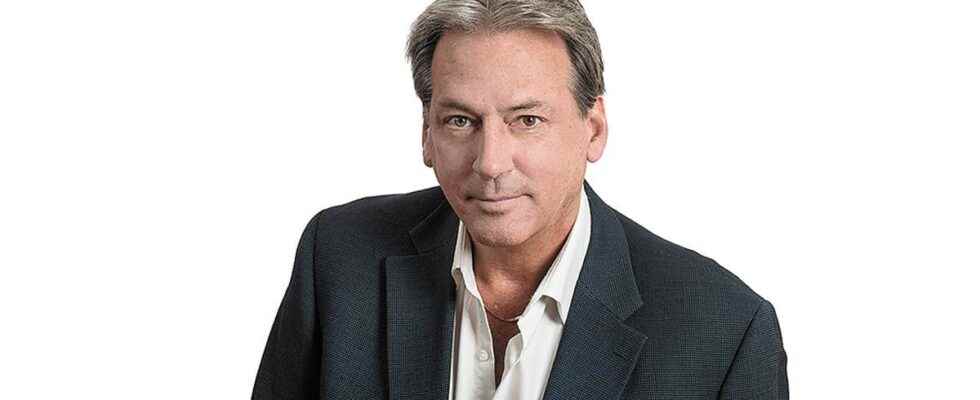The Federal Reserve of the United States (Fed) expects to have to further beef up its offensive against unbridled inflation. The return to the 2% target, once again pushed back, will not be painless.
The three-quarters of a percentage point hike in the Fed’s benchmark rate announced on Wednesday was expected. This is the third straight 75 basis point increase in a streak of five increases since March. The US central bank’s target rate is now in the 3-3.25% range, its highest level since the start of 2008, and is now swinging into restrictive territory.
What was least expected? It’s far from over, she warns. The Fed is “firmly committed to bringing inflation down to 2% and will remain so until the job is done,” insisted the president of the institution, Jerome Powell, during a press conference. He even warned of the risks of a premature break in monetary tightening. “We need to realign supply and demand. And our way to do that is to slow down the economy. If we want to return to a very solid labor market period, we have to put inflation behind us. I wish there was a painless way to do it, but there is not,” he added, according to comments collected by Agence France-Presse (AFP).
Mr. Powell thus took up the main themes of his incisive speech given at the end of August as part of the meeting of central bankers in Jackson Hole. He then indicated that the return to price stability “would take time” and would lead to “a long period of weaker growth” as well as “a slowdown in the labor market”. To add that the return of the price increase to around 2% would lead to a series of “unfortunate costs”. But giving it up would be even more damaging, he warned, illustrating the priority of an institution whose dual mission is price stability and the promotion of employment.
Moreover, the new forecasts published on Wednesday bear witness to the long way to go and the intensity of the efforts required to “tame the beast” and avoid unanchoring expectations. The median rate projected by the Federal Reserve’s Monetary Policy Committee suggests an additional increase of 125 basis points in 2022. The midpoint of the range would thus be 4.4% at the end of the year, 100 points higher than the institution’s forecasts made in June. It should reach 4.6% at the end of 2023, against a target of 3.8% outlined last June.
This does not prevent the Fed from revising its inflationary projections upwards. The progression of the personal consumption expenditure index (PCE, in English) – an indicator used by the central bank – is revised to 5.4% on an annual basis at the end of 2022, against 5.2% expected in last June. For 2023, the target becomes 2.8% versus 2.6%. For the PCE index excluding energy and food prices, the new figure for 2022 is 4.5% (vs. 4.3%), and that of 2023, 3.1% vs. 2, 7%. In short, more work before the relaxation, which would only begin in 2024.
But at the end of the day, the inflation felt by American households remains out of control. Consumer prices rose 8.3% year on year in August, compared to 8.5% in July. Those of food have, over one year, recorded their strongest increase since 1979, ie 11.4%.
The Federal Reserve, however, still does not accept – but does not rule it out – the scenario of a recession according to the broader formula applied in the United States, while the vast majority of private sector economists speak of the end of 2022-first half 2023. This does not prevent it from revising its GDP growth expectations sharply downwards, to 0.2% this year against 1.7% forecast in June, and to 1.2% next year ( against 1.7%).
On the other hand, the forecast range of the 12 members of the Monetary Policy Committee oscillates between 0 and 0.5% this year, and between -0.3 and +1.9% next year. An avoided recession is therefore not unanimous within the institution. Especially since the median unemployment rate is expected to drop from 3.8% in 2022 to 4.4% next year, against 3.7% currently. Certainly, an unemployment rate currently at its lowest levels in 50 years and the deficit of workers compared to vacancies give the Fed room to manoeuvre, but such an increase is generally associated with a recession.
US dollar leap
This upward pressure on the cost of money as well as Vladimir Putin’s desire to intensify the aggression of his army in Ukraine came to fuel a further rise in the value of the American dollar. The greenback hit its highest level against the euro in nearly 20 years to touch $0.9814 to the euro for the first time since late October 2002. Widespread sentiment that the conflict was escalating had already undermined the all European currencies. “Concerns over a potential escalation of the war in Ukraine, with the mobilization of hundreds of thousands of Russian reservists, are sending investors to safe havens”, including the dollar, summarizes Susannah Streeter, analyst at Hargreaves, to AFP. Lansdown.
For its part, the Canadian dollar sank below 75 cents US, to 74.64 cents US.
